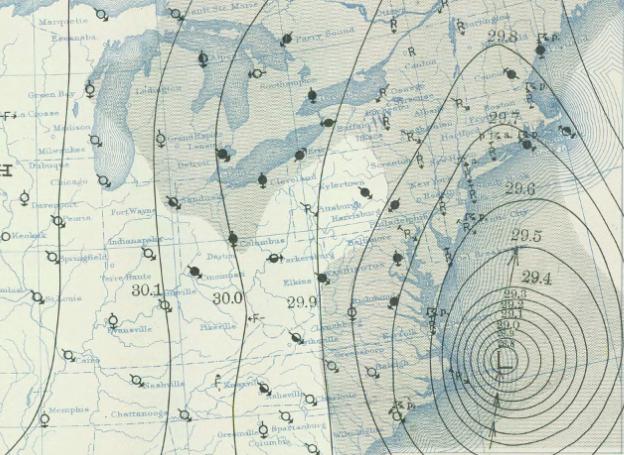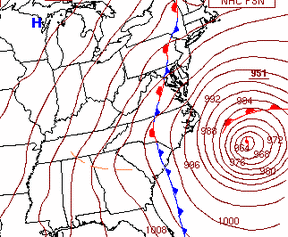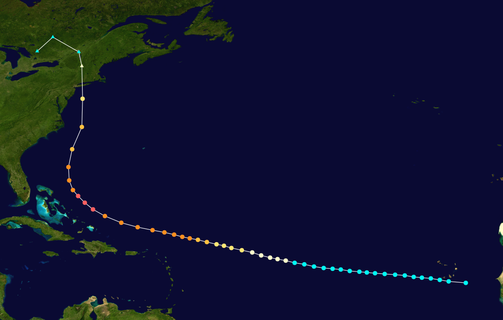Here is a surface analysis map from 21 Sep 1938 (left) and the current storm (right):
"Then there was a rip and a crash and the big laundry wing fell off the back of the house. By this time, the wind seemed to have doubled its strength and the tide had risen up over the bulkhead and was rushing across the lawn. The house, which was a big old wooden house built in about 1870, was shaking like a leaf. Windows were being blown out or sucked in. Two of the chimneys had blown down."
She then goes on to describe how she, her mother, her brother, and their cook escaped the doomed house by climbing out of a dining room window with a rope and then running to higher ground. About 15 minutes after they escaped, the house "just sailed away - easy as pie - and soon there was nothing at all left on the spot where the house stood for over 60 years."
The storm became known as the 'Long Island Express.' It is estimated that anywhere between 600 and 800 people were killed and that 57,000 structures were damaged or destroyed. Thousands of fishing and shipping vessels were also destroyed, which was devastating to the region's economy. The cost of damage in 1938 was about $306 million, which would be equivalent to around $6.3 billion in today's dollars. IF this strong of a hurricane were to ever make landfall along the Long Island and Connecticut coastlines today, the property damage would be well into the tens of billions simply due to the fact that population in these areas has grown a lot since 1938, which means more structures and more personal property would be in danger of destruction.
And THAT is one of the reasons why Hurricane Sandy is getting so much press today. Sandy is not as strong of a hurricane as the Long Island Express was, BUT it is a very LARGE, expansive storm that is going to affect millions of people just because of the sheer population density of the Mid-Atlantic and Northeast states. I worked as a meteorologist in the insurance industry, and I am confident that the damage caused by Sandy will be well over a billion dollars. The one benefit of experiencing a hurricane today as opposed to in 1938 is the improvements in weather monitoring and forecasting. Some of the computer forecast models saw this situation coming together over a week ago, and satellite tracking of hurricanes is an invaluable tool to meteorologists today that forecasters in 1938 simply did not have. We have more time to get prepared today, which, as any emergency manager will tell you, does save lives.
Because our grandparents and great-grandparents lived in Ohio, my husband and I do not have any people in our family tree who were affected by the 1938 storm. Do you have any ancestors that were affected by this 1938 storm? If you are in the path of Sandy, what are you doing to get ready?
©2012, copyright Emily Kowalski Schroeder




